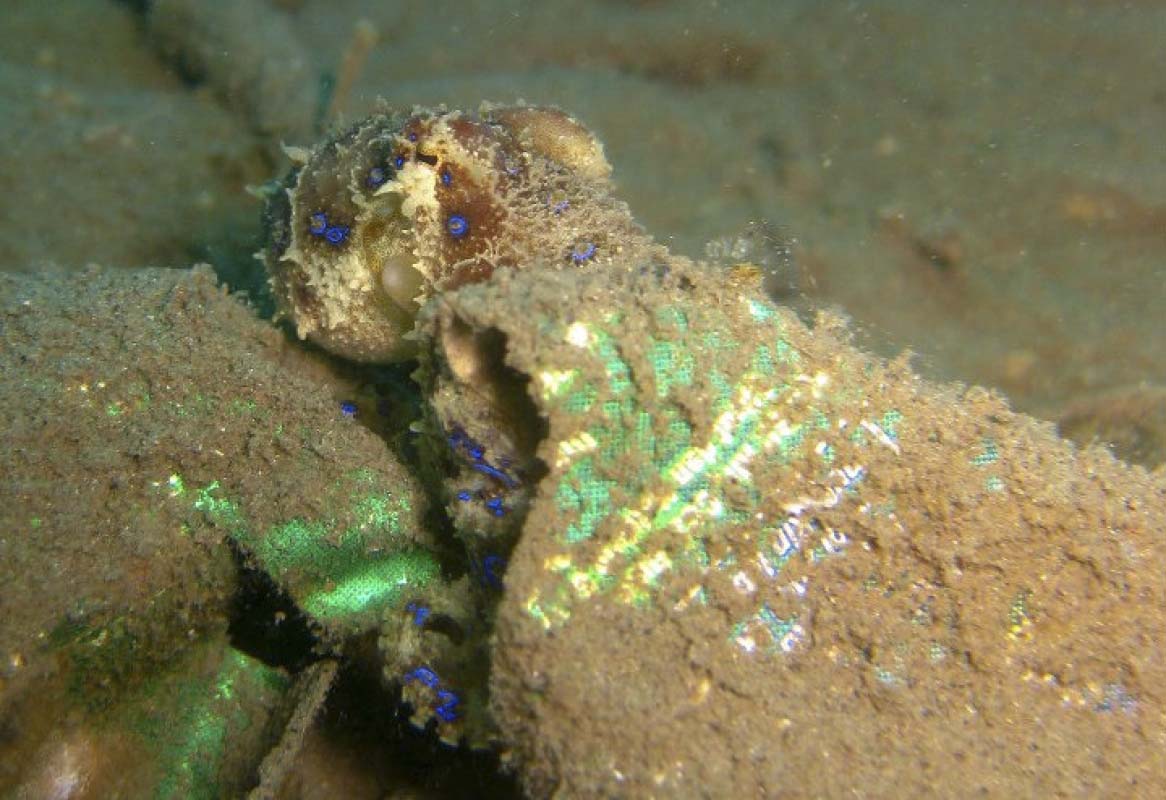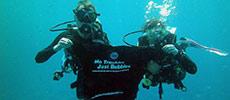Blue-Ringed Octopus
The Greater Blue-Ringed Octopus (Hapalochlaena lunulata) is a very special creature. It is one of three species of Blue-Ringed Octopus, and the only one to be found outside of Australia. Its distribution covers the Indo-West-Pacific region from Sri Lanka to The Solomon Islands and Vanuatu. It's a very small octopus, growing to not normally more than 10cm including its tentacles.
|
Blue-Ringed Octopus Hapalochlaena lunulata
|
|
|---|---|
| Scientific Rank | |
| Kingdom: | Animalia |
| Phylum: |
Mollusca (Mollusks / Molluscs)
|
| Class: |
Cephalopoda
|
| Order: | Octopoda (Octopuses) |
| Family: | Octopodidae (Octopodidae) |
| Genus: | Hapalochlaena (Hapalochlaena) |
| Species: | Hapalochlaena lunulata |
| Size | |
| Average Size: | 10 centimetres |
Its name 'Greater Blue-Ringed' refers more to the size of its rings in relation to the rest of its body. Both males and females normally die very soon after mating, and the embryos start life in a planktonic form.
They inhabit shallow coastal waters across the Indo-Pacific region, thus enabling the potential of being found by snorkellers as well as divers. Outside of their nests you can often find discarded crustacean shells.
All species of Blue-Ringed Octopus are incredibly venomous, including potentially fatal to humans. Luckily, there have been no reported human fatalities in the past, and none in 50 years. This is mainly because the octopus is clever, shy and would only bite with its beak as a last resort when cornered. There is no antivenom for the Blue-Ringed Octopus bites, but first response must focus on CPR / ventilation to ensure that the victim can receive & process oxygen. It's also vital to make sure that if outside and facing upwards, the victim's eyes are protected from over-exposure, as they are often paralysed open throughout recovery.



